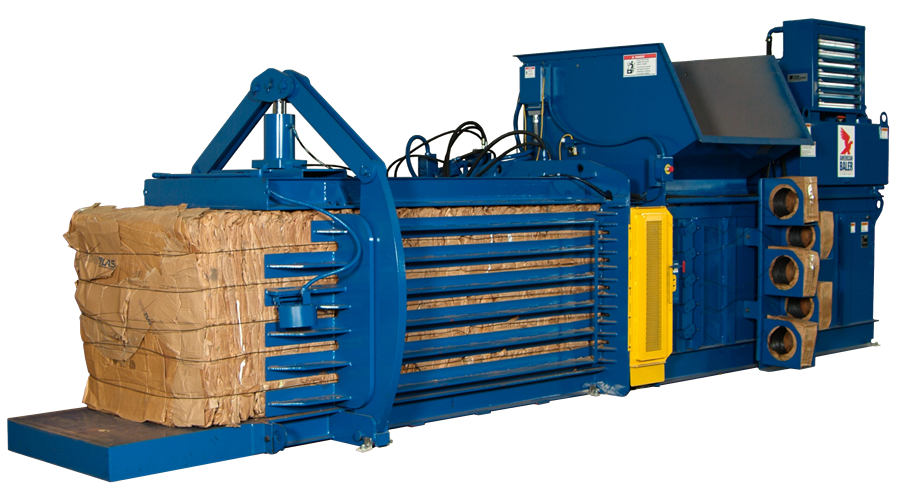Which Wire is Right?
Which Wire is Right for Your Baler?
So, you’ve recently invested in a baler, or maybe you’ve been using one for a while but aren’t exactly sure which wire is the perfect fit for your machine. Don’t worry, we’ve got you covered. Choosing the right baling wire depends on a few key factors that we’ll walk you through below.

For Vertical, Single Ram Balers
These are the most common types of balers used for baling cardboard, plastic, textiles, or other packaging materials. Found everywhere from distribution centers and manufacturing facilities to warehouses, recycling facilities, and hardware stores, these balers rely on single loop bale ties.
Single loop bale ties are available in two types of wire – galvanized and black annealed. Galvanized bale ties, which make up 90% of the market, are silver and shiny (akin to a chain-link fence) and are clean and easy to handle. The black annealed bale ties are black in color and offer a bit more stretch, but they can be a bit oily and may rust when exposed to the elements.
The lengths of single loop bale ties can range from 10′ to 22′, and the wire diameters can be anywhere from 15 gauge to 11 gauge. This depends on the size and weight of your bales.
For Auto – tie Balers
The next level up includes auto-tie balers. They are typically continuously fed with conveyor belts or air systems and do not require personnel to tie off the bales. These balers use either 50lb or 100lb coils of black annealed baling wire, commonly referred to as box wire or auto-tie wire, with most balers requiring 8 to 10 coils at a time.
The wire used for these coils ranges from 10 gauge to 12 gauge, depending on the materials being baled and bale weights, and can handle 60,000 to 75,000psi in tensile strength. These coils are either placed on mandrels on the sides of the baler or are kept in a stand near the baler after the center punch-out on the boxes is removed.


For the Largest Balers
The top-tier balers, such as two ram balers or open door horizontal balers, use baling wire on the stump, or carrier. These balers are incredibly versatile and can switch between materials quite quickly.
The two ram balers use high tensile galvanized baling wire, needing only a single stump of baling wire at a time. The stumps can range from 1500 lbs to 2000 lbs in size, containing either 11 gauge or 12 gauge material. This wire can handle between 145,000 and 170,000psi in tensile strength.
Open door horizontal balers, on the other hand, can use 8 or 10 carriers of black annealed baling wire at a time. The wire, typically found in racks or stands near the baler, can be 10g, 11g, or 12g black annealed. There are a few variations on the wire type, such as 1018 or 1022, which refer to the carbon content. Higher carbon content equates to a stiffer wire. These carriers can range from 1500 to 2000 lbs of wire each.
Still Not Sure? Give Us a Call!
Choosing the right wire for your baler is crucial for achieving maximum efficiency and optimal results. We understand that despite our guide, you might still have questions or uncertainties about which baling wire is perfect for your specific needs. That’s where we come in.
Midwest Bale Ties is here to help you make an informed decision. Our experienced team is always ready to provide personalized advice tailored to your unique circumstances. Whether you’re dealing with a single ram baler in a small warehouse or a large two ram baler in a busy manufacturing facility, we’ve got the knowledge and expertise to help you figure out your baling needs.
Don’t hesitate to reach out to us. Remember, the right baling wire can significantly improve your baler’s performance and your overall productivity. So, let’s work together to find the perfect baling wire for your machine!
Contact us
Contact Form
- Office: 765-364-0113
- Toll-free: 800-479-2365
- Fax: 765-364-0161
-
1200 E Wabash Ave,
Crawfordsville, IN 47933

